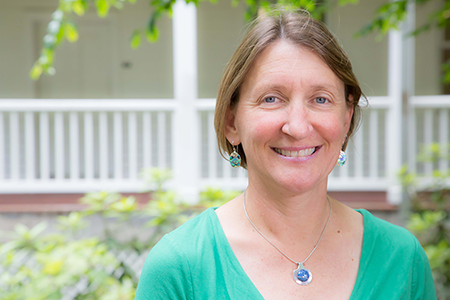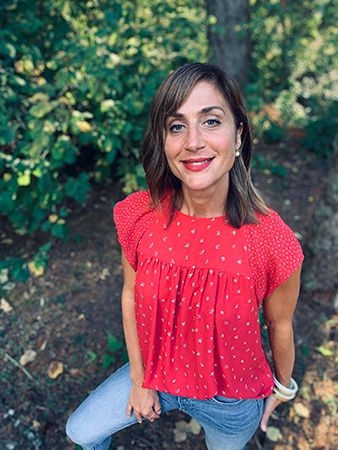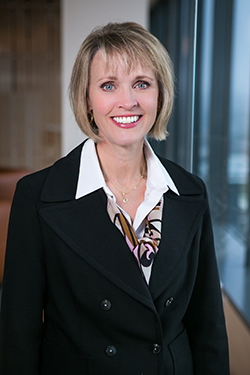Over the course of seventeen years as a school counselor in Eugene, Sara Matteri has supported students through just about every kind of challenge a kid can face. When she started as a high school counselor in 2005, the big ones were truancy, teen pregnancy, and drug and alcohol use, in addition to managing students’ class schedules and helping them plan for the future. Says Matteri: “It was working on kids getting to school, staying in school, and getting the required classes they needed to get the diploma.”
But in the span of her career, Matteri saw a dramatic shift in the size and scope of difficulties facing youth. By 2012, more and more teens were coming to her in crisis, sometimes harming themselves and often unable to afford mental health services. The COVID-19 pandemic layered on isolation, disruption in school support, grief over the deaths of parents and grandparents, and increasing food and housing insecurity, all of which have had a disproportionate impact on children of color.
 The same trends Matteri saw in Eugene have been reflected in nationwide statistics. The proportion of high school students experiencing persistent feelings of sadness or hopelessness jumped from 26 percent in 2009 to 37 percent in 2019, and then 44 percent in 2021, according to the Centers for Disease Control and Prevention. In 2009, 14 percent of teens had seriously considered attempting suicide; by 2021, that number had grown to 19 percent—and the risk of suicide was even higher for girls and for teens identifying as gay, lesbian, bisexual, or questioning their sexual identity, the CDC found.
The same trends Matteri saw in Eugene have been reflected in nationwide statistics. The proportion of high school students experiencing persistent feelings of sadness or hopelessness jumped from 26 percent in 2009 to 37 percent in 2019, and then 44 percent in 2021, according to the Centers for Disease Control and Prevention. In 2009, 14 percent of teens had seriously considered attempting suicide; by 2021, that number had grown to 19 percent—and the risk of suicide was even higher for girls and for teens identifying as gay, lesbian, bisexual, or questioning their sexual identity, the CDC found.
Youth in America are in crisis. Last year, US Surgeon General Vivek Murthy issued a public health advisory calling youth mental health one of the most pressing issues of our time, and a coalition of pediatric health groups declared a national emergency in child and adolescent mental health.
At the University of Oregon, faculty has watched this crisis develop, too. They have seen it in their research, among their students, and at a behavioral health clinic that serves the public. College of Education researchers funded by the National Institute of Mental Health examined the pandemic’s impact earlier this year; they found 25 percent of middle schoolers surveyed in March, April, and May had considered self-harm or suicide over the preceding week, says Beth Stormshak, Philip H. Knight Chair and professor in the Counseling Psychology and Human Services department.
RELATED LINKS
But across the university, there is also deep expertise in education, prevention, neuroscience, and psychology, and—bolstered by an unprecedented gift from two university benefactors—new resolve to turn the tide.
AN EXTRAORDINARY GIFT
Last year, a small group of faculty members from the Department of Psychology and the College of Education logged onto Zoom from home offices and met in backyards to start brainstorming solutions to the youth mental health crisis, recalls Jennifer Pfeifer, a professor in the Department of Psychology. There was consensus that the response must expand the mental health workforce, accelerate research and innovation, and incorporate schools and community organizations to reach youth.
Support and encouragement came from university administrators, colleagues in K-12 and higher education, legislators, Governor Kate Brown’s office—and two of the university’s staunchest supporters, Steve and Connie Ballmer, BS ’84 (journalism).
“When we heard there might be the opportunity to dream really, really big, it was reaffirming to see that you could bring folks together from across the university, and we all really quickly got on the same page,” says Pfeifer, who studies youth and adolescent behavior. “If we want to have an impact, we need to try something different.”
On March 1, the university announced The Ballmer Institute for Children’s Behavioral Health, funded by an extraordinary gift of more than $425 million from the Ballmers. In June, the university finalized the purchase of a nineteen-acre campus in northeast Portland, giving the Ballmer Institute its home. Formerly the campus of Concordia University, the Portland location centers the institute in Oregon’s most population-dense and diverse region and allows for a close partnership with Portland Public Schools.

“The Ballmer Institute is built on the foundation of established prevention work and evidence-based interventions in the College of Education and the Department of Psychology,” says Stormshak, a longtime researcher in the college who studies youth risk factors and family-centered interventions.
The institute will create a new profession of child behavioral health specialists, with a bachelor’s degree program that prepares graduates to work with youth and infuses Oregon’s mental health workforce with about two hundred new graduates each year. The institute will also offer a graduate certificate program for current educators to level up skills in areas such as teaching students about self-regulation and healthy relationships—including those in online and social media spaces—and offering trauma-informed support for youth.
The institute will hire ten tenure-track faculty members who research child and adolescent behavioral health, with a particular interest in those with expertise in addressing the needs of historically and persistently underserved communities. An additional fifteen clinical faculty members will supervise students’ hands-on training in schools and other community settings. The Ballmer gift also includes a $100 million endowment to support student scholarships and reduce financial barriers for Oregonians who want to enroll in the program.
CREATING A NEW PROFESSION
Most careers in mental and behavioral health require a master’s degree or doctoral training, so the idea of preparing child behavioral health specialists to enter the workforce with a bachelor’s degree is innovative, says Julie Wren, associate director of the Ballmer Institute. She likens it to the field of nursing, which provides opportunities to practice at associate, bachelor’s, and graduate degree levels.
Faculty has outlined a bachelor’s degree program that will begin with two years of core education courses, followed by two years at the Ballmer Institute campus in Portland. There, students will complete ninety credit hours of coursework in child behavioral health and more than seven hundred hours of practical fieldwork, supervised by clinical faculty. Pending state approval of the program, Wren anticipates welcoming a small cohort of students to the Portland campus in fall 2023, beginning with current UO undergraduates. Once the program is established, they also plan to offer admission to transfer students from other colleges and universities, including community colleges.
Students will take required courses in areas such as counseling, screening and risk assessment, ethics and professional practice, family supports, and cross-cultural skills. They’ll also be able to take courses in subjects including neurodiversity, substance use, and working with historically underserved groups such as LGBTQ and racial and ethnic minority communities.
Randy Kamphaus, a UO professor of school psychology and acting executive director of the Ballmer Institute, says students “will take a variety of courses that address unfairness, discrimination, and marginalization that reside in societal structures including schools.”
Through supervised fieldwork, students will put curricula directly into practice, first in schools but expanding to community organizations, health clinics, and other settings.
The program will partner with Portland schools with the greatest need, where the trainees’ supervised practice will help them, Pfeifer says, “develop cultural awareness and humility in working with youth from a range of diverse backgrounds and family structures.” Clinical faculty will also be available as mental health professionals to provide additional services in the schools where they supervise Ballmer Institute trainees.
Portland Public Schools welcomes the partnership with the Ballmer Institute, says Jey Buno, interim chief of student support services. It will bring opportunities for professional development for staff and the chance to collaborate in designing and implementing a supervised undergraduate training program in Portland schools. “The focus is on providing skills to respond to students regardless of race and language, experience, and support,” he says, and the Ballmer Institute’s emphasis on recruiting diverse faculty and providing culturally responsive training will help ensure that the program can meet the needs of all school communities.
At the institute, future child behavioral health specialists will learn to provide evidence-based practices that promote well-being and help prevent mental health issues. For example, they may use tools such as the Family Check-Up, a brief intervention program and web-based app developed by College of Education faculty that reduces parental stress and improve family relationships.
They will teach youth to identify and regulate emotions, set goals, problem solve, practice mindfulness, and build healthy habits for sleep, eating, physical activity, and digital media use. They’ll be able to identify students who can benefit from early intervention or who need to be referred to more advanced mental health providers. And they’ll learn to collaborate with other professionals and connect families facing financial stress or food insecurity to community resources, Pfeifer says.

“Having more trained specialists in the building would be huge,” says Matteri, who loved her work as a school counselor but found that the level of need frequently exceeded her capacity. She was often tasked with serving as many as 550 teens, more than double the American School Counselor Association’s recommended ratio of one counselor for every 250 students. Her experience is common; in the 2020–21 school year, the average ratio was one counselor per 415 students in the US, according to the association, and school psychologists are similarly overburdened.
The child behavioral health specialists trained at the Ballmer Institute will be ready to join the existing teams in schools, bringing expertise in mental health prevention and promotion and expanding the capacity to meet student needs. “There are so many dedicated educators and mental health professionals that are already in the school system,” Pfeifer says. “We’re not trying to replace any of that work—we’re trying to lend a hand.”
NEW PATHWAYS FOR CHANGE-MAKING STUDENTS
The work of the Ballmer Institute is primarily about meeting the needs of youth, but it also supports young adults driven to make a difference in the lives of others. Pfeifer predicts that “demand will be off the charts” for students applying to the program.
“It’s a remarkable thing about college-aged, emerging adults; there is this drive and a fundamental need to contribute,” Pfeifer says. The students in her undergraduate psychology courses want to help people, and it can be disappointing for them to learn that a bachelor’s degree in psychology generally won’t equip them with practical skills for working directly with children and families, she says.

Likewise, Stormshak notes, students in the College of Education’s family and human services program will have the opportunity to apply to the Ballmer Institute, gaining experience and on-site training in an urban setting to refine behavioral health skills used with children and families.
Some students may find that being a child behavioral health specialist is a lifelong career. Others may choose to pursue graduate training in social work, counseling, school psychology, or prevention science, Wren says.
By creating a bachelor’s level pathway with significant scholarship support, the Ballmer Institute will increase access for students who want to work in mental and behavioral health, a field that is disproportionately white and not representative of the diversity of the communities it is meant to serve.
Says Pfeifer: “If we can broaden access by designing a program that provides really specific instruction at an appropriate skill level, we can increase and diversify the behavioral health workforce that can work with youth in schools and other public health settings.”
Having watched the seeds of an idea grow into reality through collaboration and financial support, Pfeifer can’t help but think even bigger. “Part of dreaming big is thinking in the back of your mind that if we can make it work in Oregon, if we can show that it works here, then maybe that will help other states,” she says. “What could this look like on a national level?”
—By Alice Callahan, a freelance writer in Eugene whose work appears in publications including the New York Times, the Washington Post, and Knowable Magazine
—Photos by Randell Walton Photography (Ballmer); Chris Larsen, University Communications (Pfeifer); Michael McDermott (Stormshak); and courtesy Sara Matteri
“A PATH FOR MORE KIDS TO GET SUPPORT”
 Longtime University of Oregon benefactors Steve and Connie Ballmer, BS ’84 (journalism), have a legacy of building partnerships that support youth. With a gift of more than $425 million, the cofounders of Ballmer Group Philanthropy have made possible The Ballmer Institute for Children’s Behavioral Health, a bold new approach to addressing the behavioral and mental health care needs of Oregon’s children.
Longtime University of Oregon benefactors Steve and Connie Ballmer, BS ’84 (journalism), have a legacy of building partnerships that support youth. With a gift of more than $425 million, the cofounders of Ballmer Group Philanthropy have made possible The Ballmer Institute for Children’s Behavioral Health, a bold new approach to addressing the behavioral and mental health care needs of Oregon’s children.
OQ: What inspired you and Steve to make such a generous, amazing gift?
Connie Ballmer: Our country is experiencing a mental health crisis, and UO had a big idea and vision to help make a difference—informed by its deep relationships with Oregon’s school systems and policy makers. Through our work at Ballmer Group Philanthropy, we focus on the needs of kids, and here we saw a pragmatic and possible path for more kids to get support.
OQ: Why do you think it’s a smart move to focus on the workforce?
CB: Addressing behavioral or mental health issues always starts with people—we can’t heal people without more educated, compassionate practitioners. UO is strategically thinking about how to bring more people to this field, how to more quickly and efficiently train them, and how to ensure they find meaningful work after getting their degree.
OQ: What are your hopes for this project?
CB: I hope UO students who are interested in behavioral health will be excited by this program and see some meaningful career pathways. I hope The Ballmer Institute maintains a close partnership with Oregon’s K-12 system, learning what is needed and providing the tools to provide better care. Most importantly, I hope we create a better system for children to thrive by having access to counseling and supports if they find themselves in need.
OQ: You’ve stayed involved as a trustee, an advisor, and a donor. What makes you excited about the UO?
CB: Although I don’t live there now, I am forever an Oregonian. UO plays an important role in the future of Oregon—harnessing the brilliance and energies of Oregon’s youth, attracting more talent to the state, and training tomorrow’s workforce. We were impressed with UO’s plan for how to begin addressing mental health needs, and it is our privilege to enable this vision and support Oregon’s schools and students.
BUILDING ON A 150-YEAR HISTORY IN PORTLAND
A portion of the gift from Connie and Steve Ballmer included purchasing a campus in northeast Portland for the University of Oregon in Portland. The Ballmer Institute for Children’s Behavioral Health and established UO Portland academic and research programs will move to the nineteen-acre campus in the Concordia Neighborhood. The move will start in summer 2023 and is expected to be complete by fall 2024.
“There is planning and collaboration taking place to get the campus ready. The property has been vacant for more than two years and we are looking forward to bringing it back to life,” says Jane Gordon, vice provost for Portland. “We are growing our footprint significantly from urban buildings to an established campus with more than twenty buildings for classrooms, labs, student housing, dining and recreation, in addition to outdoor space. This is an exciting move, even as we work through lots of logistical details over the next two academic years.”
The University of Oregon has a rich history in Portland that started in the 1880s with the launch of the law school and establishing the first medical school in the region. Now graduate degrees in areas such as urban-focused architecture, sports product design, historic preservation, executive MBA, sports product management, multimedia journalism, strategic communications, school psychology, and third-year law are preparing the next generation of professionals.








